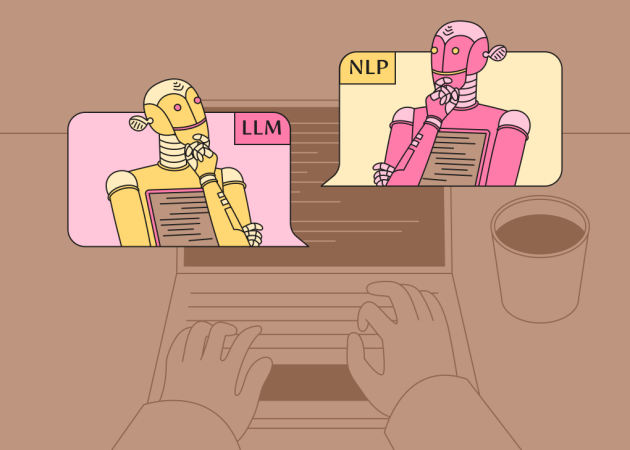
Hiring Data Scientists: Must-Ask Interview Questions for Tech Leads
Contents
Contents
The process of identifying top-tier talent in Data Science is as nuanced as the data models these professionals are expected to build. In the spirit of our previous guide on data annotation interview questions, we’ve compiled a new set of critical questions. This guide is tailored to help you hire Data Scientists who can not only manipulate data but also derive meaningful insights that drive business decisions. Let’s explore these questions in detail.
Technical Questions
1. What are your favorite machine learning algorithms and how do they work?
Expected Answer: A detailed explanation of algorithms like Random Forest, SVM, Neural Networks, etc., and their use-cases.
Red Flags: Vague answers or inability to explain the pros and cons of algorithms.
2. Explain the concept of overfitting and how to prevent it.
Expected Answer: Understanding of overfitting, the bias/variance tradeoff, techniques like cross-validation, regularization, etc.
Red Flags: Lack of understanding of basic ML concepts.
3. How do you handle missing or unclean data?
Expected Answer: Techniques like imputation, data augmentation, or removal of corrupted rows/columns.
Red Flags: Ignorance about data cleaning and preprocessing.
4. Scenario: You’ve developed a machine learning model for a critical business application, but its performance is not meeting the desired metrics. What would be your course of action?
Expected Answer: Re-evaluate the feasibility of the project. Steps for diagnosing the issue, such as revisiting data preprocessing, feature engineering, or trying different algorithms.
Red Flag: Indicating a lack of a systematic approach to problem-solving, such as jumping to conclusions without proper analysis or ignoring the importance of validating changes through techniques like A/B testing or cross-validation.

5. How do you approach choosing metrics for model evaluation? Can you give examples of metrics that would be appropriate for a binary classification problem and a multi-class classification problem?
Expected Answer: Discussion on the importance of business context in choosing metrics, with examples like ROC-AUC for binary classification and F1-score or log-loss for multi-class.
Red Flags: Choosing metrics arbitrarily without considering the problem context or business objectives.
6. How do you decide when to use ensemble methods in your projects?
Expected Answer: Discussion on scenarios where ensemble methods can improve model performance, reduce overfitting, etc.
Red Flags: Lack of understanding of the benefits and trade-offs of using ensemble methods.
7. How do you ensure your language models are not biased?
Expected Answer: Techniques for identifying and mitigating bias in datasets and models.
Red Flags: Ignorance about the importance of unbiased models.
8. Scenario: You are given a dataset with millions of rows and hundreds of features to build a predictive model. Your machine is running out of memory. What would you do?
Expected Answer: Experiment on a subset of the data before attempting full model training. Techniques for data reduction like feature selection, dimensionality reduction, or using distributed computing. Using batching/dataloaders if compatible with the ML model. Also, optimizing code for performance.
Red Flags: No experience in handling large datasets or suggesting to simply buy more memory without optimization.
9. What parameters do you take into account to ensure the A/B test will produce reliable results?
Expected Answer: Discussion on determining the sample size, ensuring statistical power, setting up control and test groups properly, and deciding on the duration of the test. May also suggest looking into segment-wise performance or other metrics.
Red Flags: Lack of a structured approach to designing the test, ignoring important factors like statistical power or sample size, which could compromise the validity of the results.
10. Scenario: You’ve made a data-driven recommendation that contradicts the gut feeling of key stakeholders. They are reluctant to follow your advice. How would you handle this situation?
Expected Answer: Importance of clear communication, an honest assessment/discussion of the analysis’s reliability, presenting data in an easily digestible format, and perhaps suggesting further experiments to validate the results.
Red Flags: Insistence on their own recommendation without considering stakeholder concerns or inability to communicate technical findings effectively.

11. Scenario: You are tasked with developing an image recognition system. Would you consider using a Convolutional Neural Network (CNN)? If so, how would you go about implementing it?
Expected Answer: Discussion on why a CNN might be appropriate for image recognition, followed by steps for implementation, such as data preprocessing, architecture design, and training.
Red Flags: Suggesting inappropriate architectures for image recognition or showing a lack of understanding of how to implement a CNN.
12. How would you approach fine-tuning a pre-trained Language Model for a specific task?
Expected Answer: Discussion on techniques like transfer learning, choosing an appropriate pre-trained model, and methods for fine-tuning.
Red Flags: Lack of understanding of transfer learning or the concept of pre-trained models.
Cultural, Leadership, and Teamwork Questions
1.Describe a situation where you had a conflict with a team member. How did you resolve it?
Expected Answer: Emotional intelligence, conflict resolution skills.
Red Flags: Blaming others, inability to handle conflict.
2. How do you stay updated with the latest trends in Data Science?
Expected Answer: Following journals, blogs, conferences, etc.
Red Flags: Lack of interest in continuous learning.
3. How would you handle a situation where your team is against implementing a model you believe would be beneficial?
Expected Answer: Ability to negotiate, provide evidence, and also willingness to consider the team’s perspective.
Red Flags: Stubbornness or inability to accept other viewpoints.
Build Your Tomorrow’s Data Science Team Today
In the dynamic world of AI and Machine Learning, it’s not just about what you know; it’s about anticipating what comes next. This guide aims to equip tech leads and CTOs with the questions that will not only gauge technical skills but also align with the broader vision of AI’s future. If you’re looking to bolster your team with individuals who are not just skilled but also visionaries in data science, then you’ve come to the right place. Reach out to us to learn how we can help you build a team that’s at the forefront of data science innovations.
Subscribe to blog updates
Get the best new articles in your inbox. Get the lastest content first.
Recent articles from our magazine
Contact Us
Find out how we can help extend your tech team for sustainable growth.







